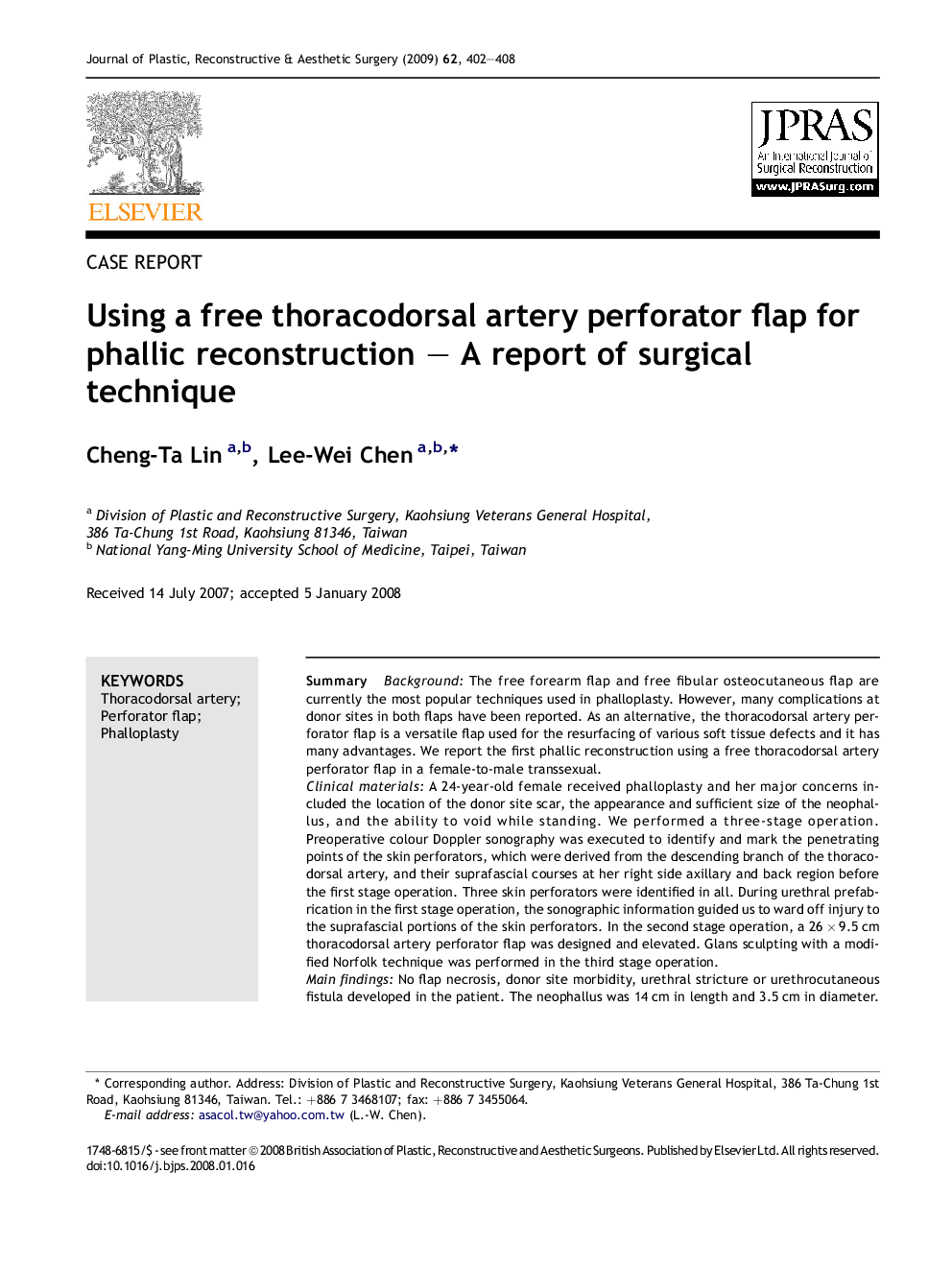| Article ID | Journal | Published Year | Pages | File Type |
|---|---|---|---|---|
| 4122045 | Journal of Plastic, Reconstructive & Aesthetic Surgery | 2009 | 7 Pages |
SummaryBackgroundThe free forearm flap and free fibular osteocutaneous flap are currently the most popular techniques used in phalloplasty. However, many complications at donor sites in both flaps have been reported. As an alternative, the thoracodorsal artery perforator flap is a versatile flap used for the resurfacing of various soft tissue defects and it has many advantages. We report the first phallic reconstruction using a free thoracodorsal artery perforator flap in a female-to-male transsexual.Clinical materialsA 24-year-old female received phalloplasty and her major concerns included the location of the donor site scar, the appearance and sufficient size of the neophallus, and the ability to void while standing. We performed a three-stage operation. Preoperative colour Doppler sonography was executed to identify and mark the penetrating points of the skin perforators, which were derived from the descending branch of the thoracodorsal artery, and their suprafascial courses at her right side axillary and back region before the first stage operation. Three skin perforators were identified in all. During urethral prefabrication in the first stage operation, the sonographic information guided us to ward off injury to the suprafascial portions of the skin perforators. In the second stage operation, a 26 × 9.5 cm thoracodorsal artery perforator flap was designed and elevated. Glans sculpting with a modified Norfolk technique was performed in the third stage operation.Main findingsNo flap necrosis, donor site morbidity, urethral stricture or urethrocutaneous fistula developed in the patient. The neophallus was 14 cm in length and 3.5 cm in diameter. It allowed voiding while standing and the appearance met the expectation of our patient. The patient was satisfied with the donor site scar because it was not located at extremities and it could easily be hidden by the arm or by underwear.ConclusionsThe thoracodorsal artery perforator flap is a good option when the patient desires an easily hidden donor site scar and covets a large-sized neophallus. Preoperative colour Doppler sonography is valuable in identifying the location of the penetrating points and the suprafascial courses of skin perforators. It facilitates prefabrication of the urethra, assists in the design of the flap, prevents injury to skin perforators during elevation of the flap, and decreases the risk of flap necrosis.
